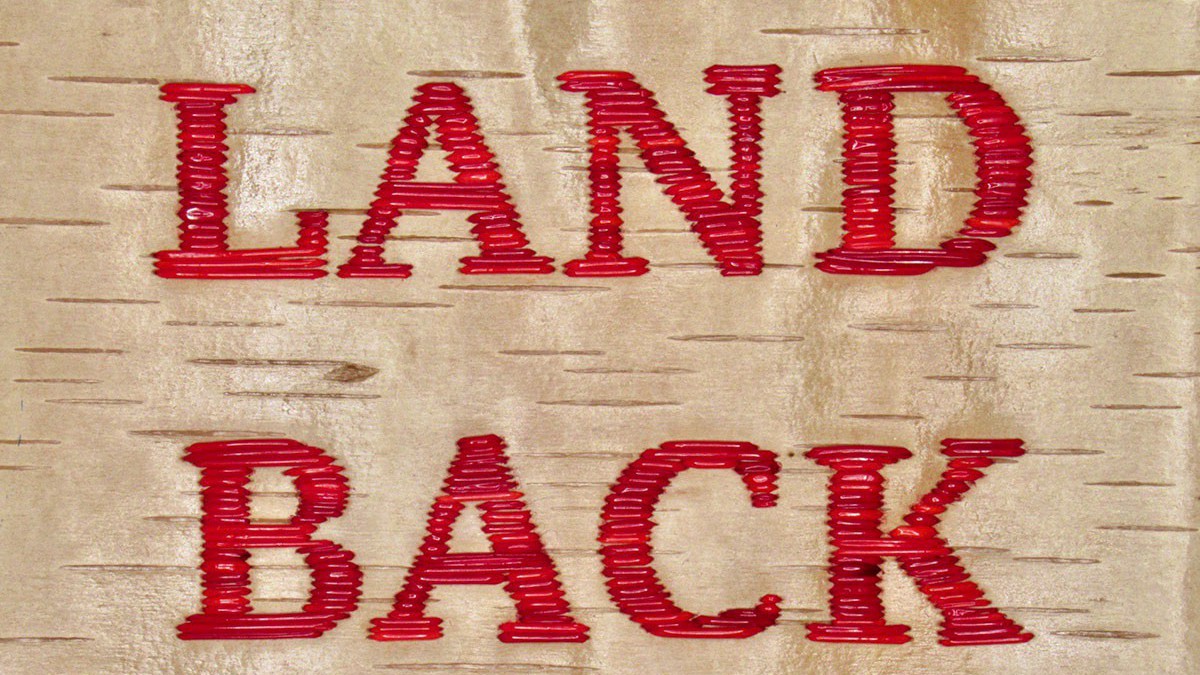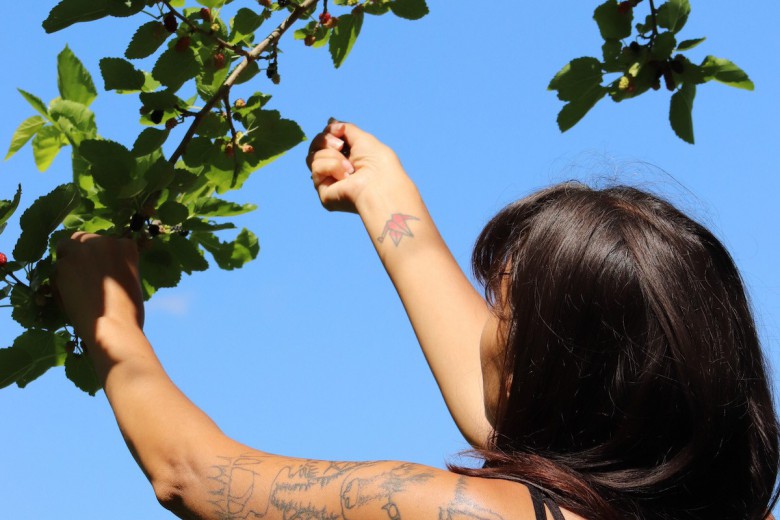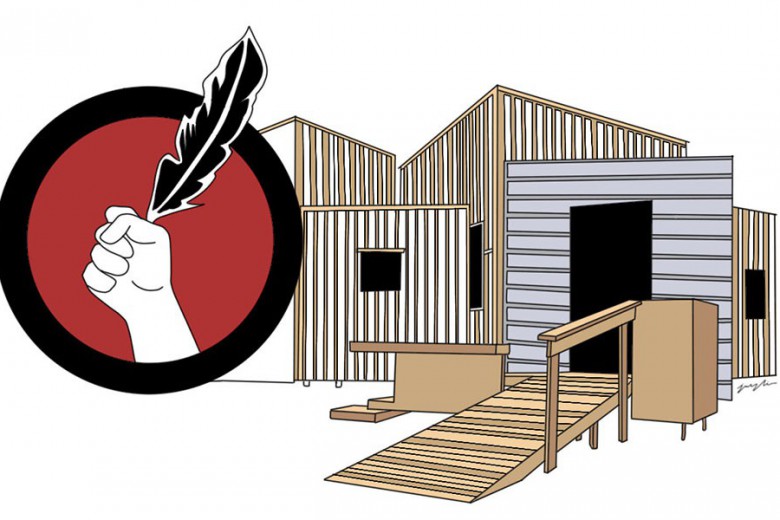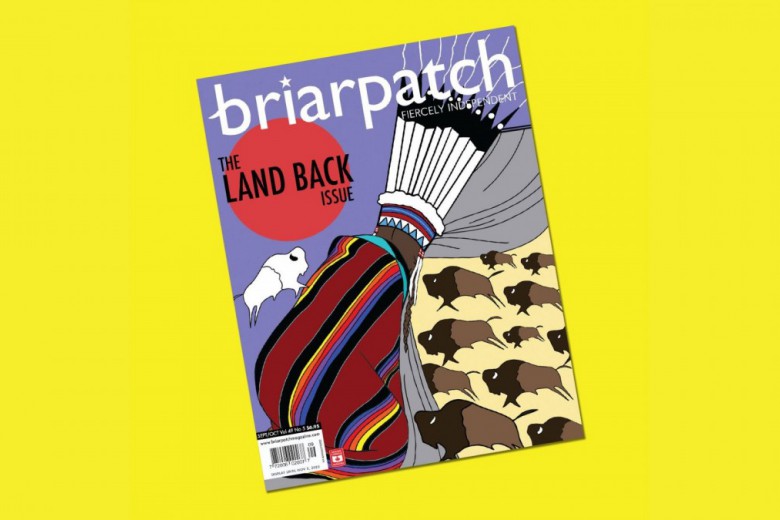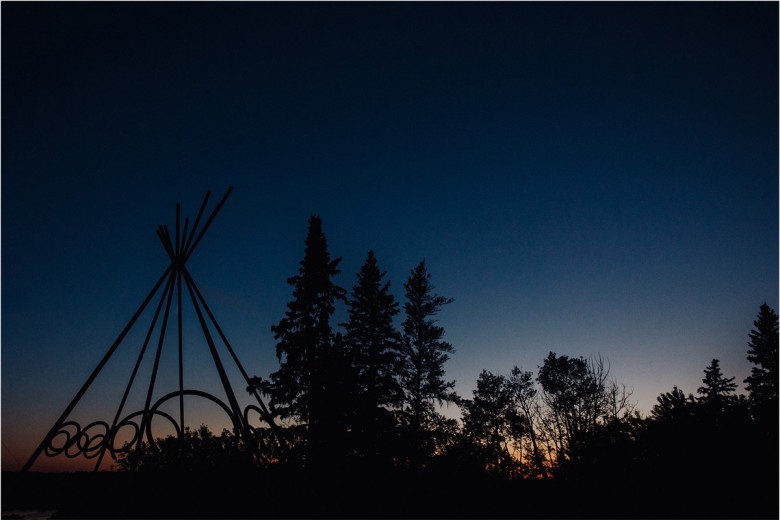Settlers have a lot of questions about the Land Back movement: What does it mean? Who will the land be given back to? How will it be governed? Will settlers be forced to leave the continent? Brooks Arcand-Paul and Nickita Longman help clear up some of the frequently asked questions about the Land Back movement
Brooks Arcand-Paul is a nehiyaw napew (Cree) from kipohtakaw (Alexander First Nation) in Treaty 6 territory. Brooks is a litigator whose practice includes Aboriginal, employment, and corporate/commercial law, with particular expertise in First Nations matters.
Nickita Longman is from the George Gordon First Nation on Treaty 4 and lives as a guest in Winnipeg, Manitoba on Treaty 1 Territory. Nickita graduated from the First Nations University of Canada with a BA in English in 2013. She is a community organizer, freelance writer, Briarpatch sustainer, and a member of the Land Back editorial collective.
Why does land back need to happen? Why isn’t the land rightfully Canada’s now?
BAP When Indigenous Nations entered into treaties with the Queen, they never intended to transfer the land to Canada. There was never the legal consideration from Indigenous Nations (i.e., a land transfer offer) required for the land to be given to Canada. Treaties allowed settlers to occupy lands, and both sides promised to work in harmony and to be peaceful with one another. Indigenous Nations have held up their side of the bargain for over 300 years, whereas the successor state of Canada continuously fails to honour the treaties. This includes relying on the legal fiction that the land could be “owned” by Canada.
NL Land Back needs to happen so all other aspects of Indigenous livelihood can return with it. Land Back means nourishing our relationship to all things on the land, but it would also mean getting back in touch with our languages and our traditional familial and governing systems, and creating a better relationship with healing and medicine.
What about lands covered by modern treaty agreements (MTAs)? Isn’t that land Canada’s?
BAP No, if you look at MTAs, particularly more recent ones like the Yukon Umbrella Final Agreement, signed in 1993, you will see there is language about including Indigenous Peoples in decision-making over the land, waters, and resources in those Nations’ traditional territories. This kind of relationship between Indigenous Nations and Canadians is one of the closest Land Back situations we have gotten to date. However, Canada still breaks these agreements at a similar rate as the other treaties made over the past 300 years (see the Supreme Court decision Nacho Nyak Dun v. Yukon).
How do I support this movement if I don’t have land? I rent an apartment from a landlord.
BAP Petition your government and call your elected representatives and ask for Canada to honour the treaties. Demand the inclusion of Indigenous Peoples at the table to make decisions alongside the (mostly) non-Indigenous governments that make decisions over our lands, waters, and resources.
NL Advocate for defunding the police in urban centres. Work toward municipal goals that centre the needs of Indigenous communities, including affordable living, access to mental health resources, harm reduction, and livable wages. Everyone is better situated to work toward Land Back when their basic needs are being met.
What about lands where the Indigenous territory spans colonial borders, like provinces or the U.S. border? How would you approach those?
BAP Borders are a colonial construct. Any border was imposed unilaterally, without consulting the Indigenous Nations that would be impacted. Resolving these issues is not difficult. In Canada, provinces should include Indigenous Peoples, from the bottom up, in discussions about interprovincial borders. Between Canada and the U.S., recognition of the Jay Treaty should be Canada’s first step. Canadian institutions need to break down the idea that Indigenous Nations are bound by one country or the other. (See the upcoming Supreme Court of Canada hearing of the 2019 appeal, R v. Desautel, which affirmed that Indigenous Peoples living outside Canada who were separated from their ancestral territories by international borders may be entitled to rights under Section 35 of the Canadian Constitution.)
NL The concept of Land Back precedes the creation of borders. It would mean dismantling borders.
If Land Back happens, do settlers have to leave the continent? What land can settlers live on?
NL I do not think displacement and erasure are core values of the Land Back movement; however, if violent extractive and capitalistic goals are what some settlers desire, I do not feel as though there is room for them in achieving Land Back.


